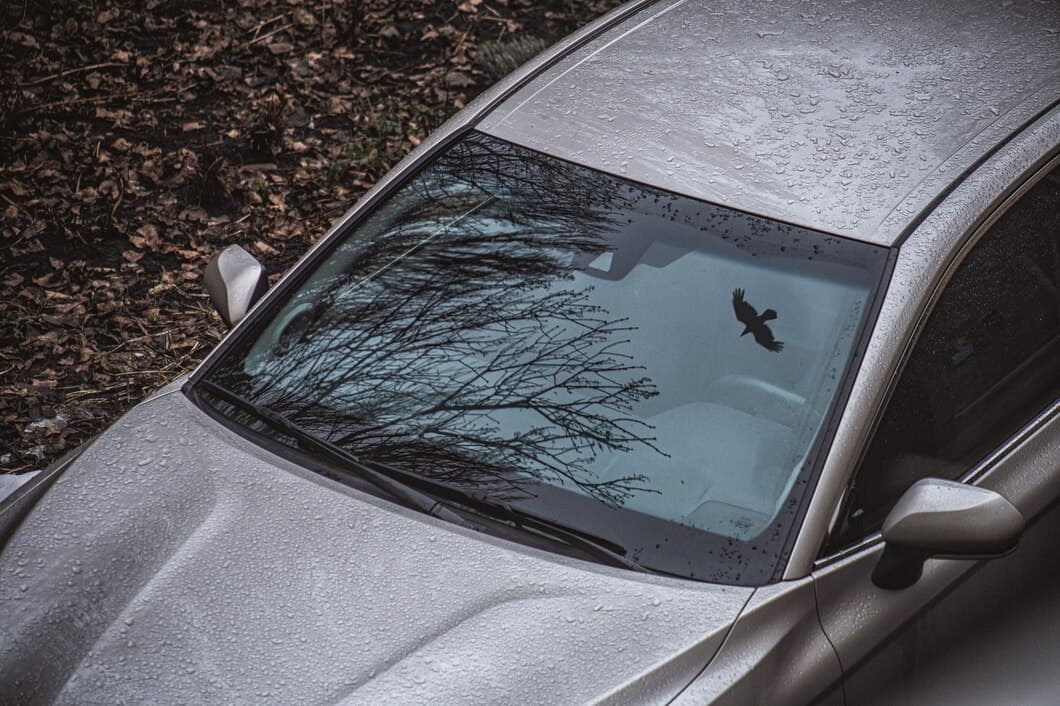
In this research paper, we explore the potential hazards of utilizing WD-40 on wiper blades. Our study aims to assess the impact of WD-40 on wiper blade performance and durability, considering factors such as material compatibility, lubrication efficiency, and exposure to environmental conditions.
The key findings of our study indicate that WD-40 can have detrimental effects on wiper blade functionality. Specifically, we observed diminished wiping performance, reduced longevity, and potential damage to wiper blade components. Our comprehensive analysis provides valuable insights for drivers seeking optimal wiper blade maintenance and replacement strategies.
What is WD-40?
WD-40 is a brand name for a popular lubricant and water-displacing spray. It is a mixture of petroleum-based solvents, aliphatic hydrocarbons, and inert ingredients. WD-40 is primarily used to lubricate and protect metal surfaces, and it is also effective as an anti-rust spray.
The exact formula of WD-40 is a trade secret, but the active ingredients are petroleum-based solvents, aliphatic hydrocarbons, and inert ingredients. The solvents help to dissolve grease and grime, while the aliphatic hydrocarbons help to lubricate metal surfaces. The inert ingredients help to protect metal surfaces from rust and corrosion.
WD-40 is sold in a variety of sizes and containers, including aerosol cans, pump bottles, and bulk containers. It is available at most hardware stores and home centers.
What are wiper blades made of?
Wiper blades are typically made from a combination of rubber and metal. The rubber part of the blade is responsible for wiping away water and debris from the windshield, while the metal part provides support and strength. The rubber is usually made from a synthetic material, such as EPDM or silicone, which is resistant to ozone and UV radiation. The metal part is usually made from steel or aluminum.
The type of rubber used in wiper blades can affect their performance. EPDM rubber is a durable material that is resistant to wear and tear, but it can be noisy when it wipes. Silicone rubber is a quieter material, but it is not as durable as EPDM. Some wiper blades also use a combination of EPDM and silicone rubber to get the best of both worlds.
The metal part of wiper blades is also important. Steel is a strong and durable material, but it can rust. Aluminum is a lighter material that is resistant to rust, but it is not as strong as steel. Some wiper blades use a combination of steel and aluminum to get the best of both worlds.
Wiper blades should be replaced every 6 to 12 months, or more often if they are damaged or worn. Replacing wiper blades is a relatively easy task that can be done in a few minutes.
Can WD-40 damage wiper blades?
WD-40 is a common household lubricant that is often used to fix squeaky hinges or rusted bolts. However, it is important to note that WD-40 can damage wiper blades if it is not used properly. WD-40 contains petroleum distillates that can break down the rubber in wiper blades, causing them to become brittle and less effective at wiping away water. Additionally, WD-40 can attract dirt and grime, which can further reduce the effectiveness of wiper blades.
If you need to lubricate your wiper blades, it is best to use a silicone-based lubricant specifically designed for this purpose. Silicone lubricants will not damage the rubber in wiper blades and will help to keep them functioning properly.
If you have already applied WD-40 to your wiper blades, it is important to clean them thoroughly with a mild soap and water solution. This will help to remove any remaining WD-40 and prevent it from damaging the blades.
Are there any alternatives to WD-40?

Sure, here are some alternatives to WD-40:
1. Vegetable oil
2. Olive oil
3. Mineral oil
4. Lanolin
5. Beeswax
6. Graphite
. These natural alternatives can be just as effective as WD-40, and they are also much safer for the environment.
How to apply WD-40 to wiper blades
To use WD-40 on wiper blades, first, use a clean cloth to clean the blades of any dirt or debris. Then, spray a small amount of WD-40 onto a clean cloth and wipe it along the length of the blade. Finally, wipe the blade with a dry cloth to remove any excess WD-40.
WD-40 can help to lubricate the blades and prevent them from sticking or squeaking. It can also help to protect the blades from rust and corrosion.
Be sure not to use too much WD-40, as this can attract dirt and debris. Also, avoid spraying WD-40 directly onto the windshield, as this can create a film that can make it difficult to see.
How to clean wiper blades
Wiper blades are an essential part of your car's safety system, helping you see clearly in all weather conditions. Over time, wiper blades can become dirty and clogged with debris, which can reduce their effectiveness. Cleaning your wiper blades regularly is important to keep them working properly and ensure your safety on the road.
To clean your wiper blades, you will need a clean cloth or sponge, a bucket of warm water, and some mild detergent. First, dip the cloth or sponge in the warm water and add a few drops of detergent. Then, gently wipe down the entire length of the wiper blade, removing any dirt or debris.
Once you have cleaned the wiper blades, rinse them off with clean water and dry them with a clean cloth. Be sure to check the wiper blades for any damage, such as cracks or tears. If you find any damage, you should replace the wiper blades immediately.
Cleaning your wiper blades regularly is a quick and easy way to keep them working properly and ensure your safety on the road. By following these simple steps, you can help extend the life of your wiper blades and keep your car in top condition.
How to replace wiper blades
Replacing wiper blades is a quick and easy task that can be completed in a few minutes. The first step is to determine the correct size and type of wiper blades for your vehicle. You can do this by consulting your owner's manual or by measuring the length of your current wiper blades.
Once you have the correct wiper blades, you can begin the replacement process. Start by lifting the wiper arm away from the windshield. Then, squeeze the release tab on the old wiper blade and slide it off the wiper arm. To install the new wiper blade, simply slide it onto the wiper arm until it clicks into place. Finally, lower the wiper arm back down onto the windshield.
Tips for maintaining wiper blades
Maintaining your wiper blades is essential for ensuring clear visibility while driving. Here are some tips to help you keep your wiper blades in top condition:
Regularly clean your wiper blades with a mild detergent and water. This will remove dirt, grime, and other debris that can build up on the blades and affect their performance. Inspect your wiper blades for any signs of wear or damage. If you notice any cracks, tears, or other damage, replace the blades immediately.
Conclusion
In conclusion, WD-40 is not recommended for use on wiper blades. It can damage the rubber and cause it to deteriorate prematurely. There are many other products available that are specifically designed for cleaning and lubricating wiper blades.
If you are experiencing problems with your wiper blades, it is best to consult with a mechanic or auto parts store to find the best solution. They can help you identify the problem and recommend the best course of action.
Frequently Asked Questions
Can I apply WD-40 to wiper blades?
It is not advisable to apply WD-40 to wiper blades. WD-40 is primarily a water displacement formula, meaning that it could compromise the rubber integrity of the wiper blade. This may lead to a decreased life expectancy, increased noise while in operation, and streaking on the windshield.
Is there a better alternative I can use to lubricate my wiper blades?
A better alternative to WD-40 for lubricating wiper blades is a silicone-based lubricant. These lubricants are more durable and less likely to damage rubber, making them ideal for use on wiper blades.
How do I clean rubber wiper blades?
To clean your rubber wiper blades, you will need a clean cloth and some rubbing alcohol. Dampen the cloth with rubbing alcohol and gently wipe the blades in a single direction. This will remove any dirt or debris that may have accumulated on the blades.
How to increase the lifespan of your wiper blades?
To increase the lifespan of your wiper blades, make sure to clean them regularly with rubbing alcohol, and avoid using them on a dry windshield. When not in use, keep them elevated off the windshield to prevent premature wear and cracking.
Conclusion
Overall, WD-40 is not recommended for use on wiper blades as it can cause damage to the rubber and reduce their effectiveness. It is advisable to use specific wiper blade cleaners or mild detergents instead, as they are designed to clean and protect the blades without causing any harm.
Regular maintenance and replacement of wiper blades are crucial for optimal visibility and driving safety. Worn or damaged wiper blades can compromise visibility during rain or snow, increasing the risk of accidents. Therefore, it's essential to inspect and replace wiper blades regularly, especially before harsh weather conditions.